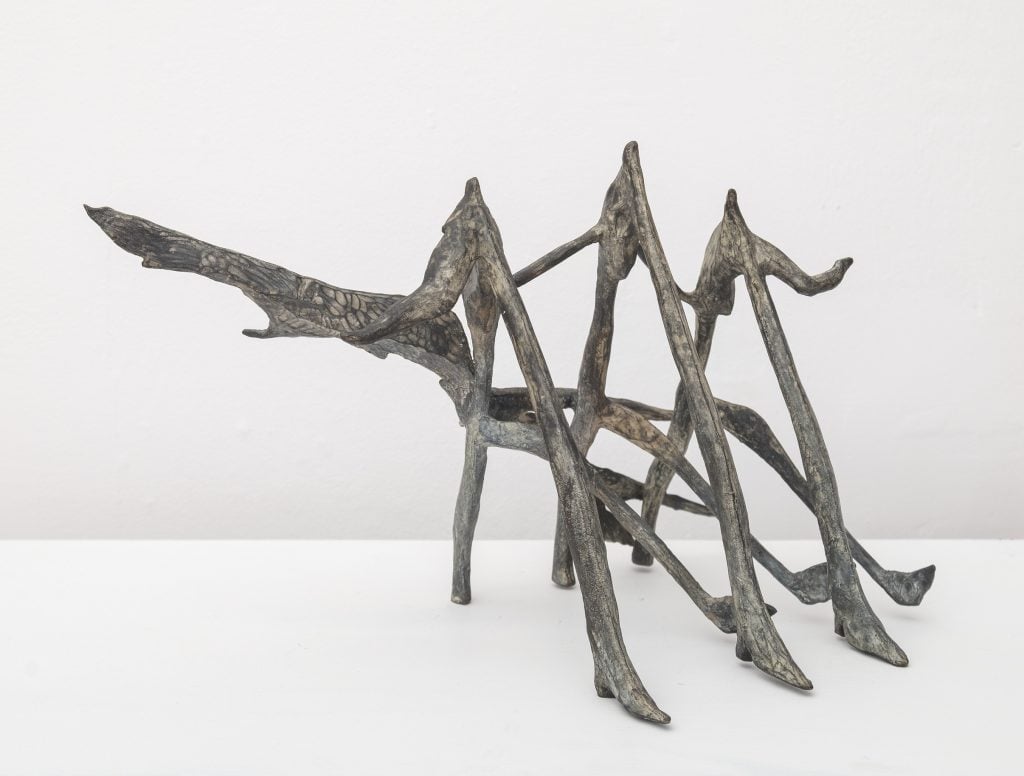
23 Dec Black Sculptor Steps Into the Spotlight After Decades of Obscurity
Source Credit: Content and images from Artnet News. Read the original article - https://news.artnet.com/art-world/helen-evans-ramsaran-strange-fruit-2591811
Tucked away on a quiet residential street in Brooklyn’s Bedford Stuyvesant neighborhood, inside a stately 19th-century townhouse, you can catch the work of Helen Evans Ramsaran, in her solo show of new works at Welancora Gallery.
Chances are, you haven’t heard of Ramsaran, an 81-year-old Black sculptor who casts her bronze sculpture at the Modern Art Factory in Queens—something that gallery owner Ivy Jones is hoping to help change for the New York artist, who has been dedicated to her practice for over five decades.
“At this point in Helen’s career, the focus is to get more institutions interested in acquiring the work, and reinserting her into the narrative about women artists, about sculptors, about women artists of color,” Jones, who began showing Ramsaran’s work in 2016, told me.
When people think of a Black woman sculptor of a certain age, she added, they tend to think of Barbara Chase-Riboud, just four years Ramsaran’s senior and the subject of a current solo show at the Louvre in Paris.

Helen Evans Ramsaran, Elephants and Birds. Photo courtesy of Welancora Gallery, Brooklyn.
“It would be great if there were enough room for another woman too,” Jones said.
But bronze sculpture—which few women artists are working in today—is not the easiest medium to live with. It’s heavy and can take up lots of space. And then there’s Ramsaran’s subject matter: graceful organic forms drawn from the world of botanicals, rather than figuration, and imbued with difficult themes of racial violence and the dark realities of the lived African American experience.
“The work is not sexy. It’s not of the body. It’s very cerebral,” Jones added.
The exhibition is titled “Strange Fruit,” an allusion, of course, to Billie Holiday’s haunting song protesting the lynching of African Americans. But it is also a literal description of some of Ramsaran’s sculptures, which often suggest otherworldly plants.
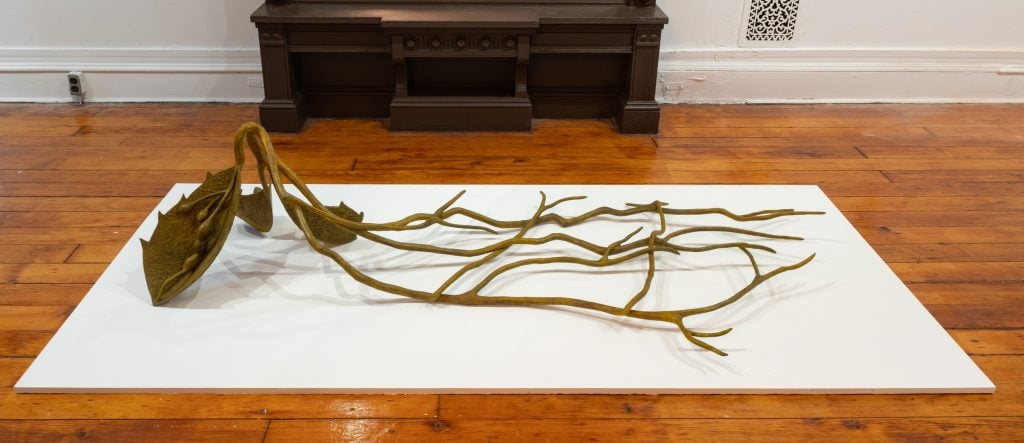
Helen Evans Ramsaran, Smashed and Broken (2024). Photo courtesy of Welancora Gallery, Brooklyn.
In the center of the room on a white platform lies Smashed and Broken (2024), a piece inspired by the death of George Floyd. It looks like a fallen branch, with a shattered seed pod lying at an awkward angle, lifeless and sad.
“It’s about the brokenness of the African American experience, but then also the fruitfulness that has come out of that experience,” Jones said.
in 2021, the New York Times’s Holland Cotter dubbed Ramsaran “unaccountably under-recognized,” something that remains true despite Jones’s best efforts, with showings at major art fairs including Art Basel Miami Beach, Frieze Los Angeles, and the Armory Show in New York.
Ramsaran has had several museum solo shows over the years, at the Studio Museum in Harlem and the Chrysler Museum of Art in Norfolk, Virginia, in 1994; and New York’s American Museum of Natural History in 2002.
But she seems to have “just missed the wave” that has given widespread recognition and market success to other African American artists, Jones said.
On the occasion of the current exhibition, I spoke with Ramsaran about her work, her inspirations, and her hopes for the future after decades of toiling in relative obscurity.
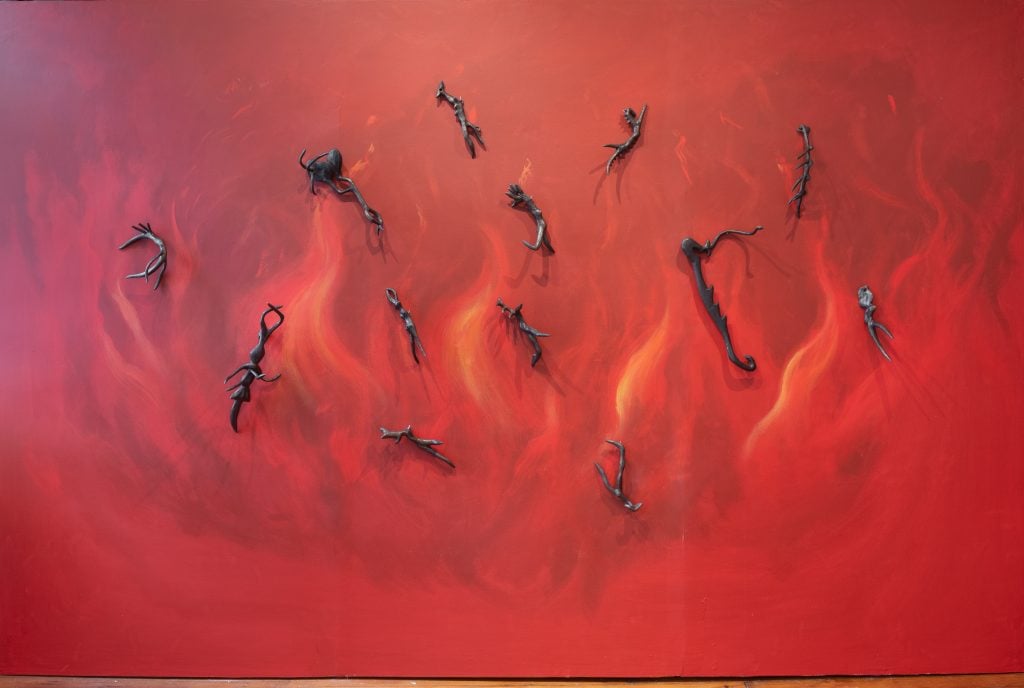
Helen Evans Ramsaran, Fragments in Flames. Photo courtesy of Welancora Gallery, Brooklyn.
How did you come to specialize in bronze, which is such a classic medium, but is not very commonly used by today’s artists?
Bronze is challenging to work with. But I get lots of assistance at the foundry. I became interested in bronze when I was a graduate student, and I learned about the people of Benin in West Africa. They had cast bronze pieces in the 1700s and 1800s.
Even with all the modern technology, bronze is still quite challenging. So I was really surprised that they were able to do that quality of work back then. They had a whole palace, you know, and they had bronze figures and bronze wall reliefs, and it was just mesmerizing to see all of this.
How did you feel about the recent movement to repatriate the Benin bronzes?
I thought they were mainly there in England. I didn’t realize that they had been scattered all over the place, in private collections too. It’s going to be difficult to get them all back.
But I’m happy that there are young people now who are insisting that those pieces belong in Africa. African children need to know about them. African people need to know about them, and when I go to Africa, I would like to go to museums to see them.
That would be amazing. And what is your process like, working in bronze?
I’ve enjoyed the versatility of bronze. I used to make drawings, then make the work in clay, and then take a plaster mold. That’s a long, long process, so I decided that I would cut out some of those steps. Now I work directly in the wax.
I make a hollow piece, I take that to the foundry, and get it cast. Or I do it in solid wax or wax with cardboard inside. The cardboard burns away when you put the wax inside the mold, and put that in a kiln. Then you just pour the hot bronze, between 1,700 and 1,900 degrees Fahrenheit. That’s what is called lost wax method.
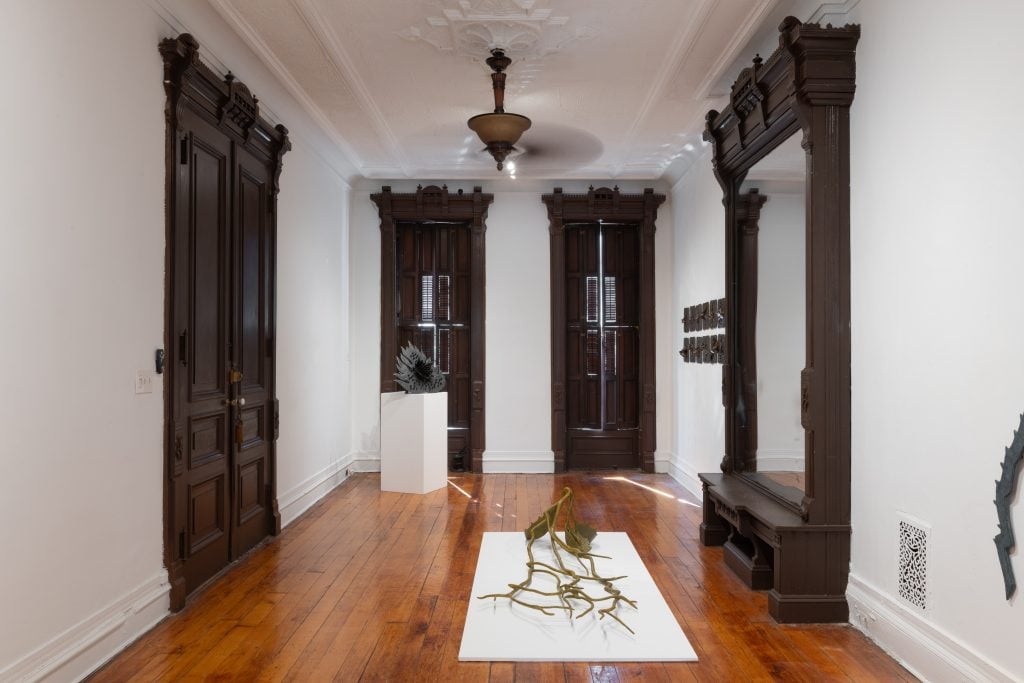
“Helen Evans Ramsaran: Strange Fruit,” installation view. Photo courtesy of Welancora Gallery, Brooklyn.
And how do you come up with your designs?
I have a lot of different interests. I have always been interested in archaeology and evolution and so forth—not only human evolution but also plant and biological evolution and botany. As a young artist, I wanted to try to mold all of that into a single vision.
I wanted my work to be kind of distinct from everyone else’s. And this is why I still continue to work at bronze because bronze is such a versatile material. Sometimes it was difficult to communicate what I was trying to do, but I think over the years I have succeeded.
During the pandemic, there were a lot of shootings of young Black men and also Breonna Taylor. I wanted to do something to remember that.
As I was making this work, I was also remembering the trauma that Black people have always gone through. I was born in Bryan, Texas, and I remember in my neighborhood seeing people on chain gangs.
We lived just inside the city limits, so our neighborhood was almost like a village in the countryside. And the police would come late at night, just disrupting the neighborhood supposedly looking for criminals. It was terrifying to me as a child.
I also did 30 sculptures for the exhibition, called Seeds of Struggle, as a memorial for all the children who have lost their lives to gun violence. And that’s really a sore spot with me, that we have these guns in our society and laws that allow people to carry them on the streets. They’re so easily available. You can get parts of them through the mail—I think that’s outrageous.
The sculptures are inspired by seeds and I have them on these plaques, these relief forms that are broken. I got the idea from scribes in ancient Egypt and the Middle East who wrote their records on clay tablets. Clay, as you know, is vulnerable to breaking once it’s dried. I got the idea for seeds because seeds are the very beginnings of plant life.
In fact, all of the sculptures in this exhibition have something to do with plants and plant parts, because plants have a certain amount of resiliency. They start from something as small. But it’s not easy for seeds to take root to grow. They have to find the right conditions to grow in, and sometimes they don’t. Some of them don’t make it—that’s why I called it Seeds of Struggle. Eventually, there will be fifty of those tablets. That’s what I’m working on now, finishing that memorial.
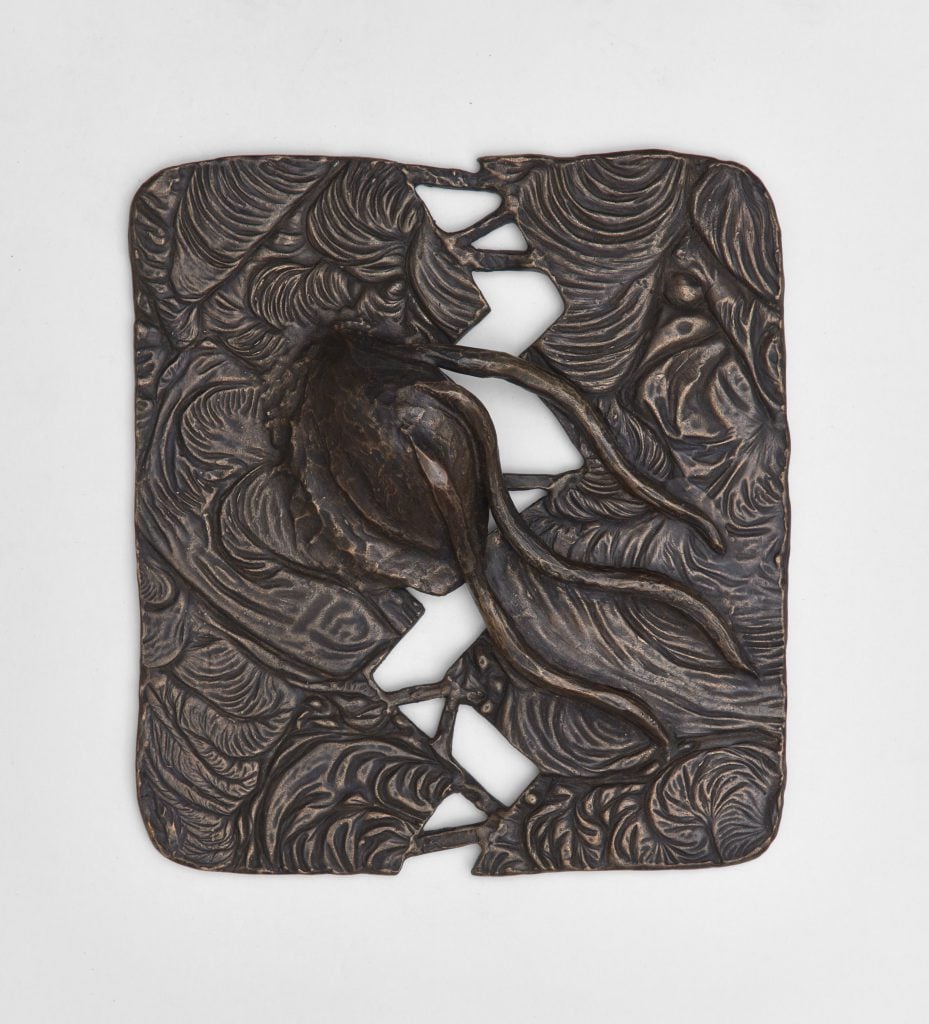
Helen Evans Ramsaran, Seeds of Struggle No. 6 (2024). Photo courtesy of Welancora Gallery, Brooklyn.
Wow, that’s beautiful. I’m wondering if, as a young artist, you were ever discouraged from making work that was influenced by African art history? Because I think you were a bit ahead of your time, looking in that direction.
I went to Ohio State in the ’60s, and I did my master’s there as well. It’s not that they discouraged me. It’s just that they didn’t teach us anything at all about Africa. And so when I got to graduate school, I realized that all the things I was interested in with African art, I didn’t know anything about them.
I went to the Anthropology Department, and they didn’t quite know what to do with me. I told them there was one professor who had told us that the human species started in Africa. It was very empowering to hear that. And so I went back to him as a graduate student.
He said, “I don’t know anything at all about art, but I can tell you more about Africa.” He told me I had to write a paper every month about something in Africa that I was interested in doing with my work.
I was also interested in other indigenous groups like the Native Americans in the northwest and the southwest, and down in Mexico and Central America. And so I did papers on them as well, and also the indigenous people of Japan—lots of people don’t know that there were indigenous people in Japan. So I acquired a portfolio of things that interested me that I could draw on in my sculptures. And so that’s how I molded my unique vision.
I have been all over the place. I was a college professor for 38 years, teaching sculpture and ceramics. Now I’m retired.
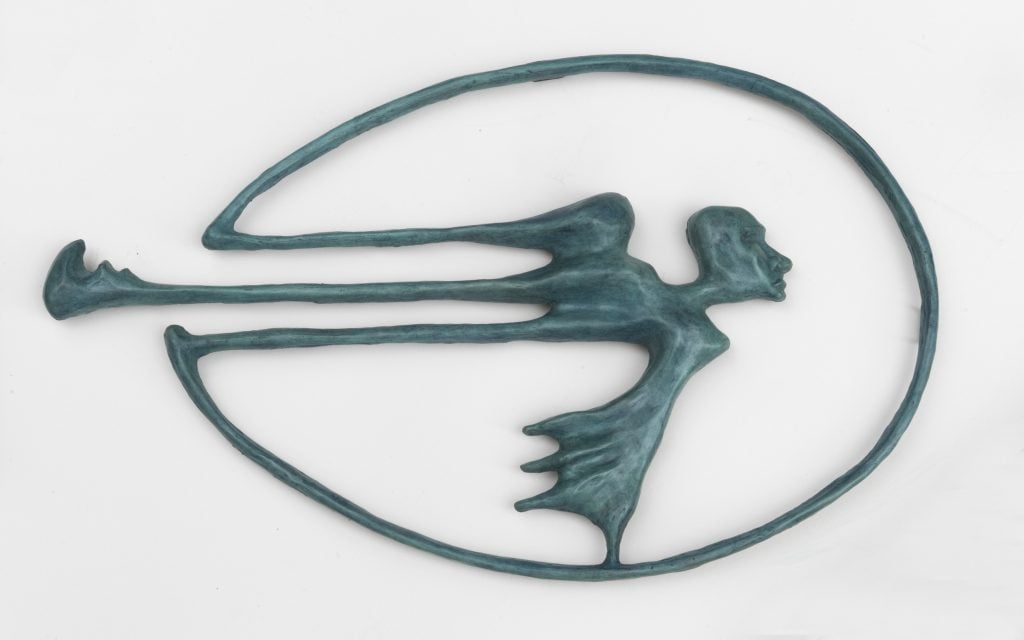
A sculpture by Helen Evans Ramsaran. Photo courtesy of Welancora Gallery, Brooklyn.
Have you found that people have become more receptive to these themes in your work as you’ve gotten older?
Black people always responded quite positively to my work. But when I tried to present that work to galleries in the ’70s and ’80s, it was quite foreign to them. They were not used to looking at or listening to these kinds of ideas about Africa.
But I insisted. In fact, I was on a panel once, I think in 1995, at Paul Kasmin Gallery. They asked us what did we think the art world was going to be like 10 to 20 years from now. I said, “Africa is going to become more prominent”—and Africa certainly is more prominent in the art world. So I was way ahead of my time with that too!
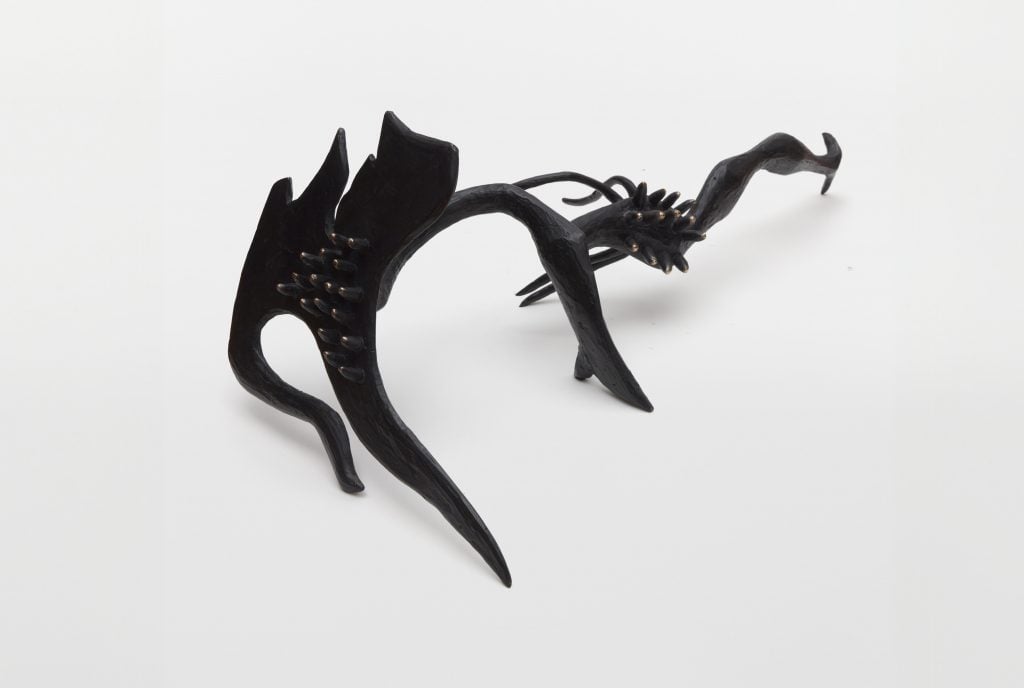
Helen Evans Ramsaran, Nightmare (2024). Photo courtesy of Welancora Gallery, Brooklyn.
And for you, what do you see as your hopes for your legacy and perhaps more widespread recognition of your work now that the themes you’ve always been engaged with are getting traction more widely?
I would love to have my work at least shown in museums because I have done this work for more than five decades. Unfortunately, I still have a lot of it, so I would like for this work to get more widely known and shown in museums.
When I left graduate school, one of the things that I wanted was to have my sculpture in parks, in outdoor spaces where children could climb on them and enjoy them, and so forth. Only now are young people getting those kinds of opportunities—those were not available to me, even though I tried. I was really quite disappointed that I was not given opportunities to make large-scale sculptures and put them outside. That was my big dream.
I think of those Greek bronzes that were shipwrecked and have been in the sea for so many years. They were dropped to the bottom of the sea, and they brought them back up and cleaned them up, and they’re still beautiful. Bronze can withstand almost anything, you know. The wind, the rain, tornadoes—everything. That’s one of the reasons why I wanted to be able to put my pieces outside and never have to worry about them.
There were just not many opportunities out there for you if you were Black, and if you were a woman.
That’s just been the story over and over again. But things have been changing, and I hope that you’ll get to see some of that change for yourself as well.
Right, I hope so. But it’s still hard. You know, I’m 81 years old now, so nobody takes my work seriously that much anymore.
Well, you’re right on track for what the Guerrilla Girls said, that for women artists “your career might pick up after you’re 80.”
Right, right. And that’s that’s terrible because it gives you what, four to five years to enjoy being an artist, to be recognized as an artist? Otherwise, it’s a real struggle.
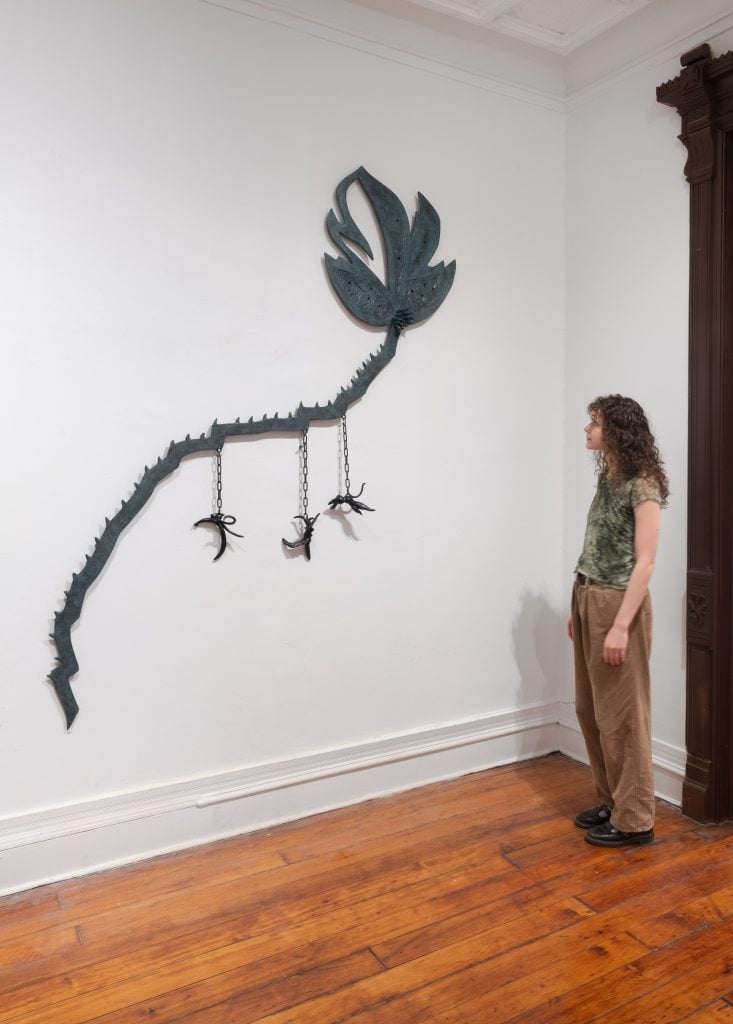
“Helen Evans Ramsaran: Strange Fruit,” installation view, with Stranglehold. Photo courtesy of Welancora Gallery, Brooklyn.
I’m sure. How did you keep going and keep working on these beautiful works for all these years without more widespread recognition?
You have to be an artist. You have to be single-minded about everything. And so I was single-minded about things. I just wanted to do art and that was it. I wanted my whole life to be about art and in that much, I succeeded.
Also, I succeeded in traveling around the world to finish my education. I was grateful to the anthropology professor who gave me so much, but I felt like I needed more. So I traveled everywhere. I went to China. I spent the summer in Japan just making handmade paper. I’ve been to Africa about seven or eight times. I spent a year in Ghana and a year in Zimbabwe, and traveled all over, South Africa and other places.
I had to do a lot of the traveling on my own. I had to pay for it. I tried to get the Fulbright and all kinds of fellowships. And you know, I didn’t get those, but that didn’t stop me. I went anyway. And it was thrilling.
And now, in Ivy, you have a dealer who’s really advocating for you.
Yes, she’s been taking my work all over the place. And I’m really impressed with all she’s done. But it’s been difficult for me to exhibit outside of the gallery. My work is not included in these big museum shows about women and Black women. It’s just not. I don’t know why.
“Strange Fruit: Helen Evans Ramsaran” is on view at Welancora Gallery, 33 Herkimer Street, Brooklyn, New York, October 10, 2024–January 4, 2025.
Source Credit: Content and images from Artnet News. Read the original article - https://news.artnet.com/art-world/helen-evans-ramsaran-strange-fruit-2591811

